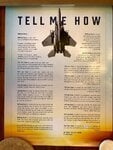Hello pops-paolo,
Your initial question might have drawn a little less unfavourable attention if it had been posted in the Gaming / Simulation forums, though you would not have gotten nearly as much attention and probably not gotten the same quality of responses.
As others have already pointed out, War Thunder is basically an arcade game. It isn't really even remotely close to a historically accurate flight simulator. I personally don't play it, but from some of the videos I have watched, it is pretty obvious that for many of the aircraft, the equipment and armaments are not representative of the actual aircraft.
Consider that for game balance, War Thunder has to allow just about every nationality to have a "fighting chance". In reality, many nations didn't develop technology to be competitive late in the war.
I generally don't brag about it much in present company, but I have been involved in developing for flight sims as a hobby for about two decades. It is generally quite easy to achieve the quoted performance specifications for an aircraft. What is the difficult part is modelling the handling differences which made one aircraft easy to fly and another "tricky" and dangerous. How do the characteristics change with varying airspeed? The problem is that even when there is a pilot report, it is qualitative and requires a somewhat subjective interpretation.
I can tell you that the Airacobra was one of my projects from about two years ago and to get that flight model to where I was basically satisfied took most of a year of research and experiments to see what worked. Even when I was done, I can't claim it is any more than my interpretation. What exactly is the degree of instability when the ammunition is expended??? I still don't believe it is entirely correct but it is as close as I know how to tune it at this time.
If you want to continue this discussion, I would be glad to do it, but believe it belongs in the Combat Flight Simulator forum instead of here.
- Ivan.
Your initial question might have drawn a little less unfavourable attention if it had been posted in the Gaming / Simulation forums, though you would not have gotten nearly as much attention and probably not gotten the same quality of responses.
As others have already pointed out, War Thunder is basically an arcade game. It isn't really even remotely close to a historically accurate flight simulator. I personally don't play it, but from some of the videos I have watched, it is pretty obvious that for many of the aircraft, the equipment and armaments are not representative of the actual aircraft.
Consider that for game balance, War Thunder has to allow just about every nationality to have a "fighting chance". In reality, many nations didn't develop technology to be competitive late in the war.
I generally don't brag about it much in present company, but I have been involved in developing for flight sims as a hobby for about two decades. It is generally quite easy to achieve the quoted performance specifications for an aircraft. What is the difficult part is modelling the handling differences which made one aircraft easy to fly and another "tricky" and dangerous. How do the characteristics change with varying airspeed? The problem is that even when there is a pilot report, it is qualitative and requires a somewhat subjective interpretation.
I can tell you that the Airacobra was one of my projects from about two years ago and to get that flight model to where I was basically satisfied took most of a year of research and experiments to see what worked. Even when I was done, I can't claim it is any more than my interpretation. What exactly is the degree of instability when the ammunition is expended??? I still don't believe it is entirely correct but it is as close as I know how to tune it at this time.
If you want to continue this discussion, I would be glad to do it, but believe it belongs in the Combat Flight Simulator forum instead of here.
- Ivan.


